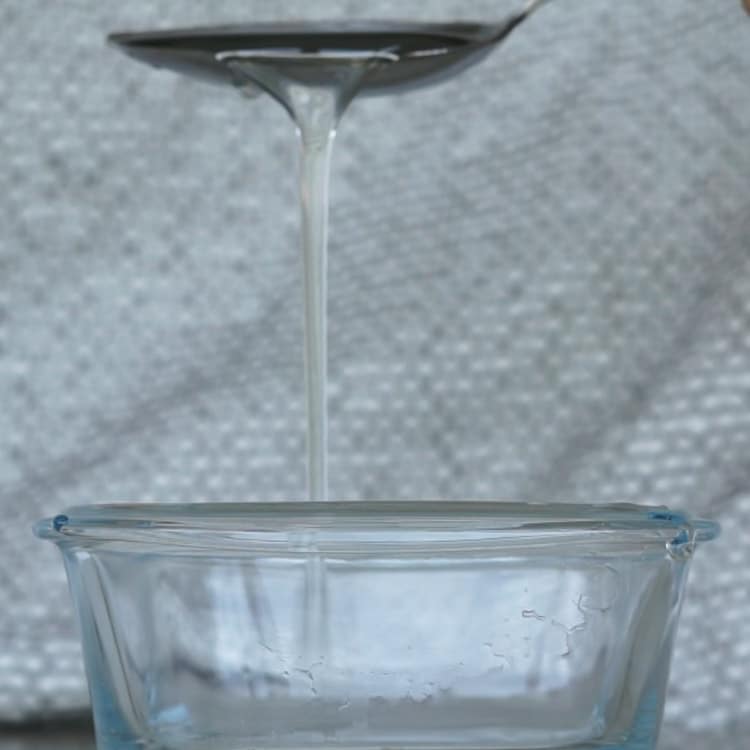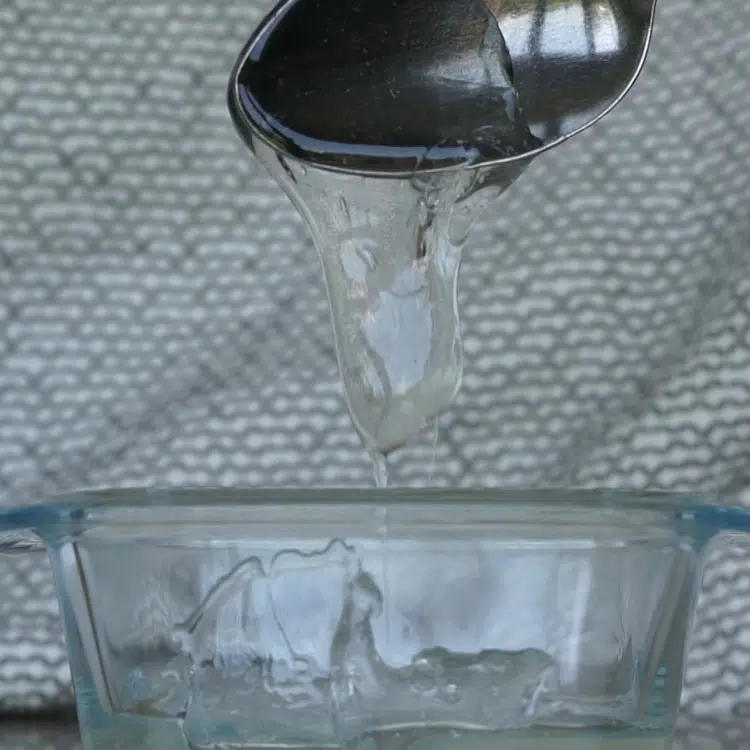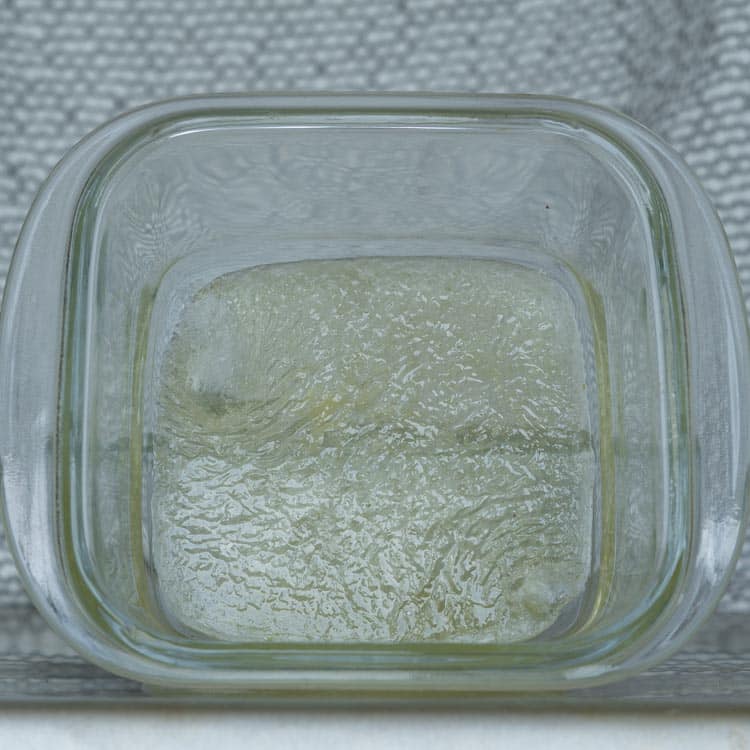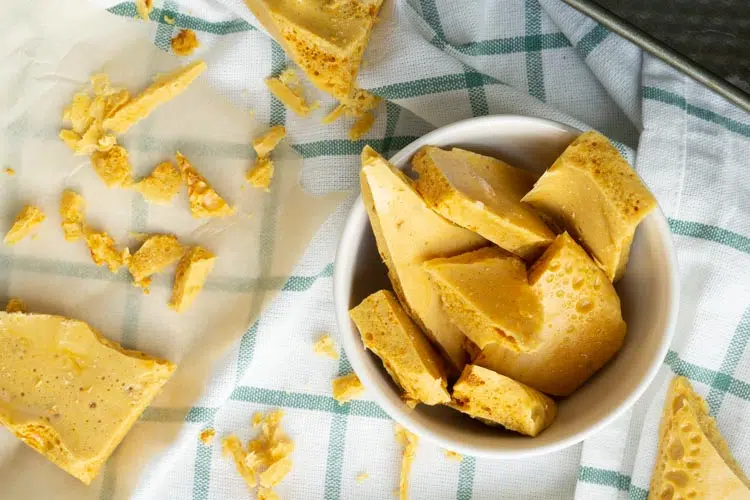What Is Sugar Cooked Until It Changes Color Called
Whenever making caramel, marshmallows, honeycomb, or most other sugar candies you'll need to bring a sugar syrup to the boil. Often, you'll find very detailed instructions on just how to boil that syrup. You may be told to cook until a specific temperature. Alternatively, the description might be a bit more vague, telling you to cook it to a specific stage, e.g. the hard crack stage. These very specific instructions are often accompanied by a word of warning, that slight deviations from those instructions might 'ruin' the recipe.
Even though making sugar candy definitely involves art, you can't skip the science either. These specific instructions are given for good reason. They help you achieve a specific consistency that would otherwise be hard to get to.
But, if all you have are those instructions, you might be wondering just why you need to do what you need to do. It's why we cooked up a lot of sugar syrups for you, to a range of temperatures, to help you see just how those sugar syrups change. Hopefully, once you've seen just how these syrups change with changing temperature, the instructions in your recipe will finally make sense!
- The Basics: Boiling sugar
- Dissolving sucrose
- Concentrating a sugar solution by boiling
- Boiling point of sugar solutions
- Sugar Syrup Cooking Stages
- Sample 1: 105°C / 221°F
- Sample 2: 112°C / 234°F
- Sample 3: 115°C / 239°F
- Sample 4: 121°C / 250°F
- Sample 5: 125°C / 257°F
- Sample 6: 135°C / 275°F
- Sample 7: 145°C / 293°F
- Sample 8: 150°C / 302°F
- Samples 9 – 13: ≥160°C – Caramelization
- Ice water test naming convention
- 7 stages of sugar syrup cooking
- Follow the recipe
- Troubleshooting sugar syrups
- Making it into a final candy
- Sources
The Basics: Boiling sugar
There are a lot of different types of sugar candy out there. All over the world you'll find different variations, some stick to sugar syrups, others go for hard and crackly. Some use the same technique but set them apart by using different flavors. All these different types of candy are variations of the same concept though: cooking sugar in water. The sugar is cooked until you reach a specific consistency. It forms the basis of whichever candy you're making. It will determine whether your candy cracks, snaps or flows, whether it's stable over time, or maybe not as much.
Dissolving sucrose
Just how you can get so many different types of products out of the same ingredients is all due to the unique chemistry and physics of sugar. For now, we'll focus on regular sugar (or common sugar) which is made of a molecule called sucrose. There are a lot of other sugars though, such as dextrose (glucose), fructose, and lactose. However, sucrose is most commonly used, so we'll stick to that one.
Interested in a real deep dive into what happens when cooking sugar syrups? We've written about it extensively in this separate article.


Sucrose, like most other sugars, is a hydrophilic molecule. In other words, it enjoys sitting in water. This is mostly determined by the OH-groups on the sucrose molecule (see above). Sucrose readily dissolves in water and when it does so, water molecules will arrange themselves around the sucrose molecule.
At room temperature, you can dissolve an astounding 67g of sugar into just 33g of water. Add any more, and the sugar won't dissolve anymore. However, if you increase the temperature of the water, you can dissolve even more sugar. This is a core concept of most sugar candy: increasing the temperature of water to dissolve more sugar. When you then cool down these sugar solutions again the solutions behave very differently compared to a sugar solution you make at room temperature. It can become sticky, viscous, even hard and crackly!

Concentrating a sugar solution by boiling
Newsletter
Want to be updated on new food science articles? Subscribe to our weekly newsletter
At low concentrations, you can increase the sugar concentration of your sugar syrup by adding more sugar. However, at some point, this sugar won't dissolve anymore. You then need to start heating the sugar solution to dissolve even more sugar until it starts to boil. From this point onwards you can concentrate your sugar solution not by adding in more sugar, but by getting rid of water! While the sugar syrup is boiling, water will evaporate. Boil it for longer and you'll evaporate more water. But how do you know you've evaporated enough water?
Boiling point of sugar solutions
Luckily, there's an easy way to determine just how concentrated a sugar solution is: by measuring its boiling point. The higher the concentration of sugar in your solution, the higher the boiling point of this solution. As an example, water boils at 100°C (212°F), however, a solution with 80% sugar and only 20% water boils at 112°C (233°F). This is caused by a phenomenon called boiling point elevation and is very similar to the concept of freezing point depression which ice cream makers make grateful use of.
As a result, if you know the temperature of a boiling sugar solution, you will know its concentration! Now, most recipes won't call for a concentration. Instead, they'll just mention the temperature, which automatically ensures that you've hit the required concentration.
High Altitude Cooking If you're making sugar candy at high altitudes, up in the mountains, you will have to correct for the altitude in your recipes. Water and sugar solutions boil at a different temperature than they do at sea level!
Sugar Syrup Cooking Stages
By changing the concentration of your sugar syrups you will have changed its behavior as well. If you've only concentrated it a little bit, it will still be quite liquid. However, if you've boiled it to a very high boiling point, the sugar syrup will behave completely different from the one you started out with! You can see this well by cooling down your cooked syrup back to room temperature.
To help you understand just what happens to that syrup, we've cooked a sugar syrup to ever-increasing temperatures, to show you what happens. To do so, we just took the same sugar solution and took a sample every 5-10°C. We poured these samples into small heat-proof glass bowls. This way they could cool down quite quickly. We then left them to cool to room temperature and then investigated them. Below you can find the results of all these tests!
Note: with each sample we're giving the 'ice water test stage'. This is a very common naming convention that's used to describe sugar syrups. We discuss it in more detail towards the end of the article.
Sample 1: 105°C / 221°F
This is your typical sugar syrup. The solution still flows off a spoon easily but will be quite sweet!
Characteristic temperatures*: ∼100-110°C / ∼212-230°F
Ice water test stage: N/A
Applications: syrups (e.g. to drizzle on a cake, make jalebi)
*All sugar solutions cooked to a temperature within this range will show very similar behavior to this sample.


Sample 2: 112°C / 234°F
The sugar solution still flows off a spoon, but it has clearly become thicker. It won't seep into a cake as easily anymore.
Characteristic temperatures : ∼110-113°C / ∼230-235°F
Ice water test stage: thread stage
Applications: preserves
Sample 3: 115°C / 239°F
The sugar solution doesn't flow as freely anymore and has clearly become a lot thicker.
Characteristic temperatures : ∼113-118°C / ∼235-245°F
Ice water test stage: soft ball
Applications: fondant, fudge


Sample 4: 121°C / 250°F
The sugar syrup has started to become very very viscous. You can still pull it apart, but it forms these thick long sheets.
Sample 5: 125°C / 257°F
This was the last sample that would still flow, though it was very viscous. It was hard to pull it apart. It will still give a soft candy, but that candy will be very firm and sturdy.
Characteristic temperatures : ∼121-132°C / ∼250-270°F
Ice water test stage: hard ball
Applications: nougat


Sample 6: 135°C / 275°F
From this point onwards the sugar syrup doesn't flow anymore when it's cooled down to room temperature. A candy made with this syrup will be hard and crackly and will no longer be soft.
Characteristic temperatures : ∼132-149°C / ∼270-300°F
Ice water test stage: soft crack
Applications: taffy
Sample 7: 145°C / 293°F
This sample looked identical to sample 6. It turned hard in the glass jar and could in no way be moved anymore!
Characteristic temperatures : ∼132-149°C / ∼270-300°F
Ice water test stage: soft crack
Applications: Caramel popcorn
Sample 8: 150°C / 302°F
This sample is as hard as glass, just like samples 6 and 7. Even though 6, 7 and 8 might all look the same, sample 8 clearly is the hardest of all three and will only contain a very small amount of water.
Characteristic temperatures : ∼149-155°C / ∼300-310°F
Ice water test stage: hard crack
Applications: Honeycomb
Samples 9 – 13: ≥160°C – Caramelization
At some point, the sugar syrup will have so little water remaining, that it won't noticeably change texture anymore. Instead, it will remain quite hard and crackly. However, a lot of chemical reactions will start to occur at this point. These are the so-called caramelization reactions.
At approximately 160°C (320°F) sucrose will start to caramelize. Less than about 1% of your sugar solution now consists of water! The remaining sucrose molecules will start to react with each other in caramelization reactions. As a result, the sugar turns brown and a lot of delicious flavors and aromas are formed!

Ice water test naming convention
Before people had easy access to thermometers, cooks did realize that these sugar solutions changed consistency as they were boiling. Since they couldn't use a thermometer, they developed another test: the ice water test.
The core concept of this test is that you very rapidly cool down a small amount of your sugar syrup in ice water. In a way, you're simulating the test we did above with the glass jars, but in a faster manner. Since you're cooking sugar, you don't have a lot of time to decide whether you are at the correct stage or not. You need to be able to make a decision quickly.
The cold temperature immediately stops the cooking process and cools the sugar down very rapidly. At low boiling points, the sugar is soft and pliable after being dunked in ice water. However, at higher temperatures, it would become hard and crack. Seven different stages were distinguished (see below). However, keep in in mind that they aren't as clear-cut as you might think and might differ a few degrees here and there.
Personally, we've never had a lot of luck with this ice water test. It definitely is a skill in and by itself to get it right!

7 stages of sugar syrup cooking
- Thread: 102 – 113°C
- Soft ball: 113 – 118°C
- Firm ball: 118 – 121°C
- Hard ball: 121 – 132°C
- Soft crack: 132 – 149°C
- Hard crack: 149 – 154°C
Note: these sugar cooking temperatures are rough indications. They will depend on a few different factors and the transition from one to the other isn't always immediate. However, they are great guidelines. Also, a lot of online sources do not specify these temperatures in a continuous manner. For instance, they might say 132-143°C is the soft crack stage and 149-154°C is the hard crack stage. But then what about those degrees in between? They still make a sample that's somewhere in between soft and hard crack. We decided to have a continuous measure of temperatures.
Follow the recipe
Keep in mind that really the most important part is to do as your recipe says. Even though 113 and 118°C both fall within the soft ball stage, they do have a different concentration of water. As such, a recipe calling for a sugar syrup of 118°C might not work with one at 113°C (and might work perfectly fine with 119°C!).
Troubleshooting sugar syrups
Of course, things don't always go to plan when making these candies. Fortunately, even though cooking the syrup itself is a precise and delicate process, there are ample ways to fix it!
I overshot my cooking temperature, what do I do?
Remember that the boiling point of your sugar syrup is a measure for the concentration of sugar and water in your syrup. Adding more water will lower the boiling point again. As such, add more water carefully (take care, it might splatter!)! You generally only need quite a small amount, say <10% of the mass of sugar in your pot (e.g. if you're cooking 200g of sugar, add 20g of water).
This will cool down the syrup, increase the water concentration and allow you to bring it back to the boil to the correct temperature.
Why does the temperature increase so slowly at the start of cooking, but raises really rapidly towards the end?
The boiling point of your sugar solution increases when the amount of water lowers. This is not a linear process by weight, the boiling point doesn't increase by a set number per Xg of sugar dissolved. Instead, it's related to the concentration of sugar and water making it non-linear. The temperature increases faster for higher concentrations than it does for lower ones.
That should become a lot more clear by looking at the example below:
Solution 1: 100g sugar + 150g water – Boiling point: 101.5°C
Solution 2: 100g sugar + 25g water – Boiling point: 112°C
Solution 3: 100g sugar + 11g water – Boiling point: 123°C
Notice how you need to evaporate 125g (150-25) of water to increase the boiling point by 11°C to go from solution 1 to 2. However, you only need to evaporate 14g (25-11) of water for the next increase of 11°C!
When trying the ice water test, my sugar simply dissolves and disappears!
Yes, this is quite common and the tricky part of the ice water test. It's very important that your water is cold enough to 'shock' the sugar. If it's not cool enough, the sugar will simply dissolve in the water. Also, don't use too much water. If all else fails (which it often does for us with this test), grab a thermometer!
Do I need a candy thermometer for cooking candy?
No, you do not need a dedicated candy thermometer. Any thermometer will work just fine, as long as it can measure up to at least 180°C (preferably a little higher). In our opinion candy thermometers are clunky and in the way. We strongly prefer using this thermometer from IKEA (called FANTAST). Super simple and sturdy and can also be used as a meat, dairy, "whichever other food you need to measure" thermometer.
I'm also using corn syrup (or another sugar) in my sugar syrup. Will this change the outcomes of the sugar syrup stages?
Yes, it will. Every sugar will impact the boiling point of the sugar solution slightly differently. A sugar solution of dextrose with 60% sugar will have a slightly different boiling point than a sucrose solution will. However, the mechanism is very much the same so you can use the same concepts. This is also why we recommend following the instructions of your recipe. This recipe should have been developed for the sugar types it calls for, ensuring you're using the right settings.
Making it into a final candy
Once you've cooked your sugar syrup, there are still a lot of options as to how your final candy turns out! That all depends on the other ingredients you add to your candy. You might add fats such as butter or oils, you might add extra water (e.g. milks), all of those then change the consistency of the candy again.

Sources
Phase/state transitions of confectionery sweeteners: thermodynamic and kinetic aspects, 2010, R.W. Hartel et. al., link
On Food and Cooking, 2004, Harold McGee, p. 682, link
Vickie A. Vaclavik, Elizabeth W. Christian, Essentials of Food Science, 2007, Springer Science & Business Media, p.336, link ; used table 14.1 for boiling point of sugar syrups
Resources for the sugar syrup cooking stages:
- Autumn Carpenter, The Complete Photo Guide to Candy Making, Creative Publishing International, 2014, link
- Irma S. Rombauer, Marion Rombauer Becker, Ethan Becker, John Becker, Megan Scott, The Joy of Cooking, Simon & Schuster, 2019, p.857, link
- Exploratorium, The cold water candy test, link
What Is Sugar Cooked Until It Changes Color Called
Source: https://foodcrumbles.com/sugar-cooking-temperature-stages/